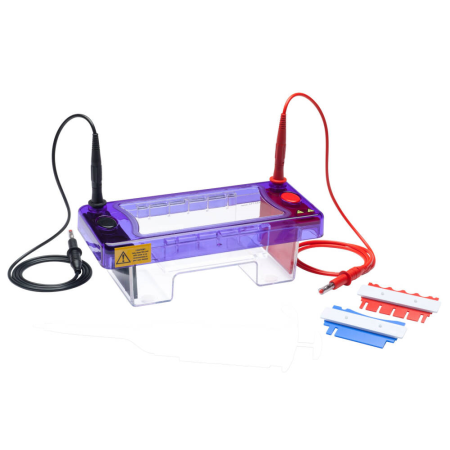Gel Electrophoresis - Tanks - Horizontal
Horizontal gel electrophoresis tanks separate DNA or RNA fragments by size, crucial for genetic analysis and research.

Understanding Gel Electrophoresis - Tanks - Horizontal
Horizontal gel electrophoresis tanks are essential laboratory devices used to separate DNA or RNA fragments based on size. In this system, a gel, typically made from agarose, is cast horizontally and submerged in a buffer solution within the tank. The samples are loaded into wells at one end of the gel, and an electric current is applied across the gel, causing the nucleic acids to migrate towards the positive electrode. Smaller fragments move faster, enabling separation by size. Horizontal tanks are ideal for analysing DNA or RNA in applications such as genetic fingerprinting, PCR product analysis, and cloning experiments. These tanks are widely used in molecular biology labs due to their ease of use, efficiency, and reliability in visualising and comparing nucleic acid samples.
